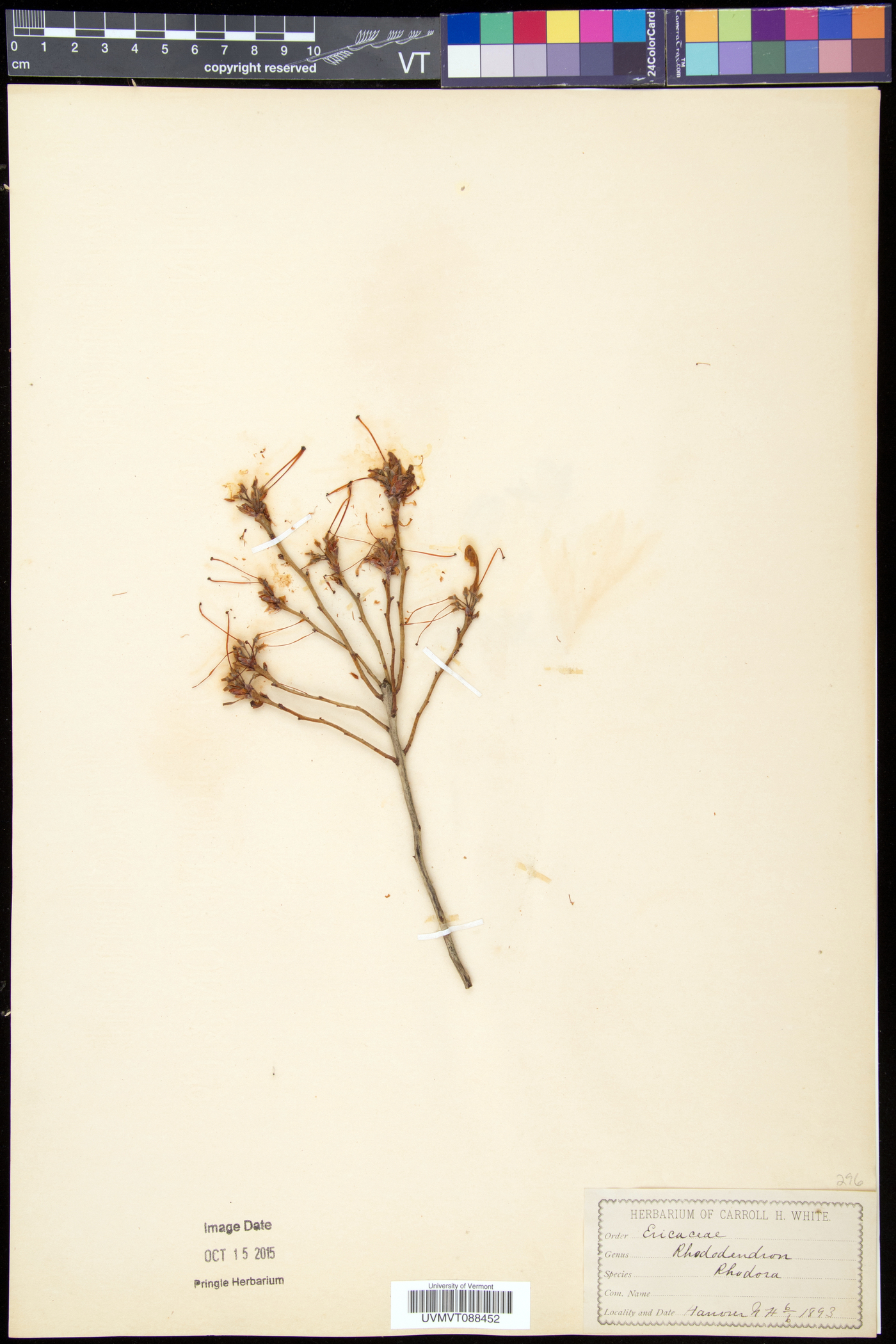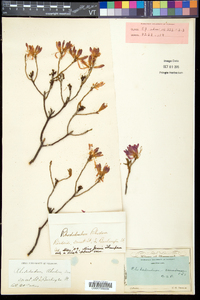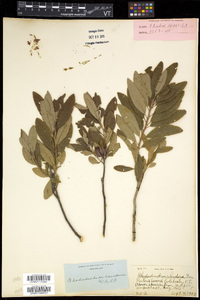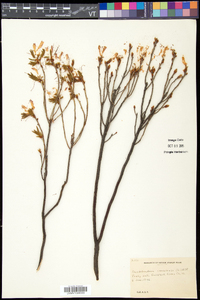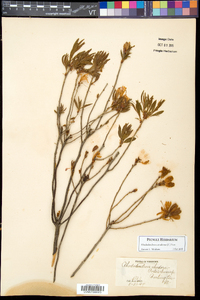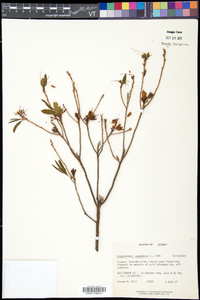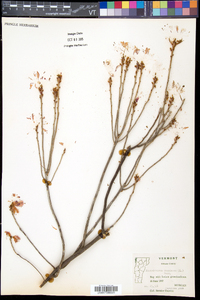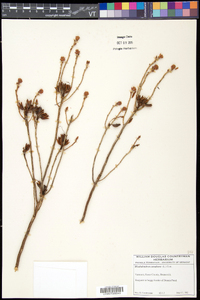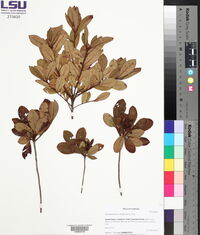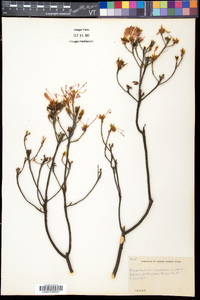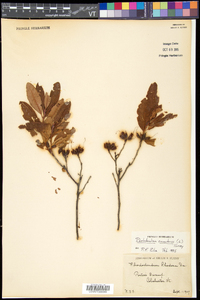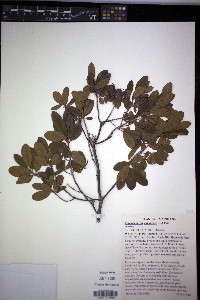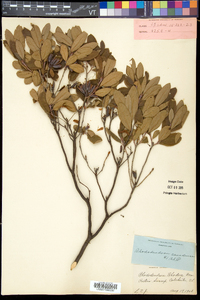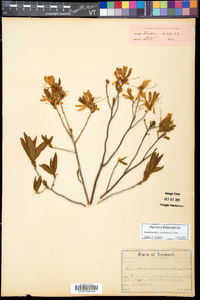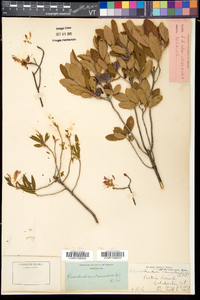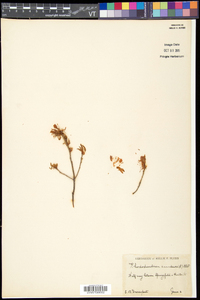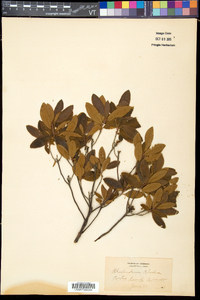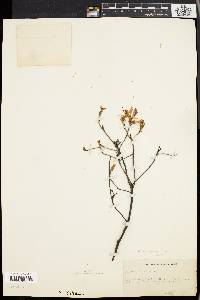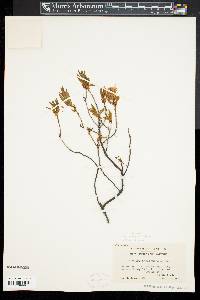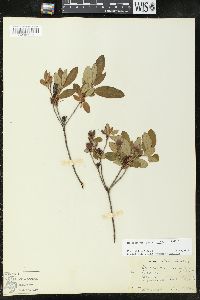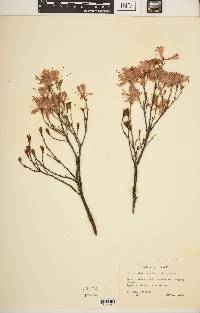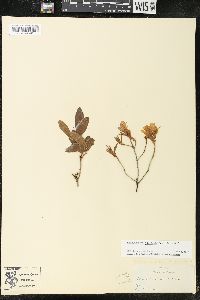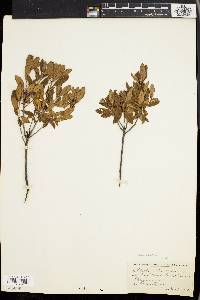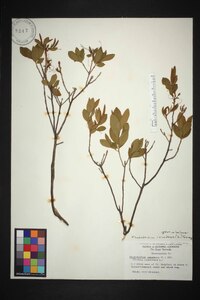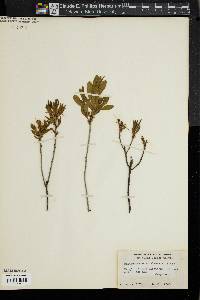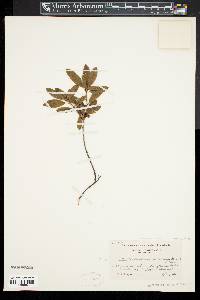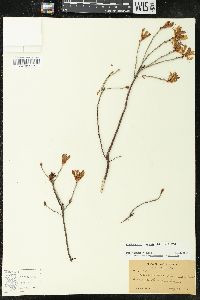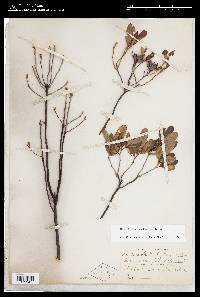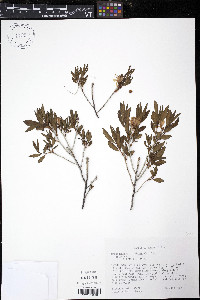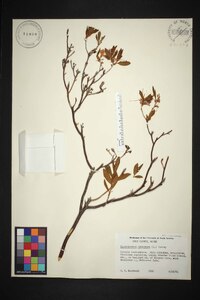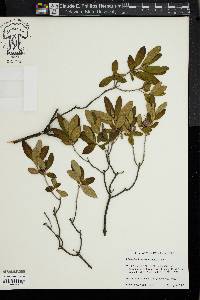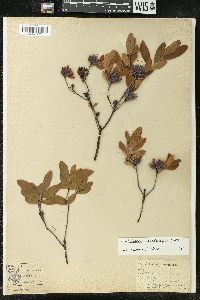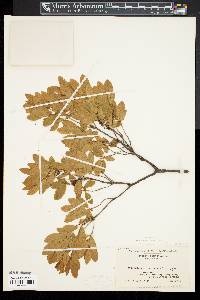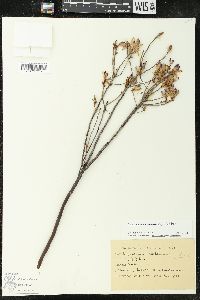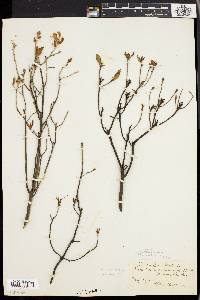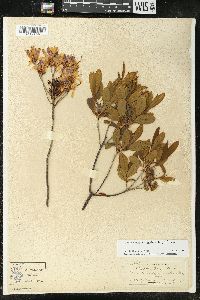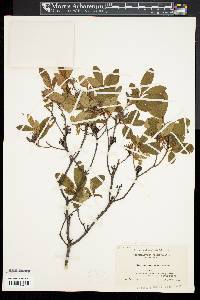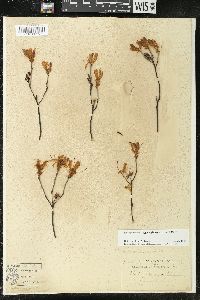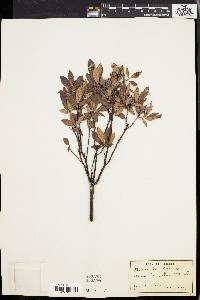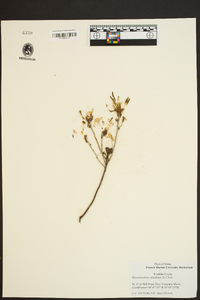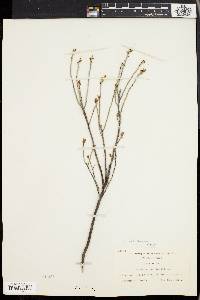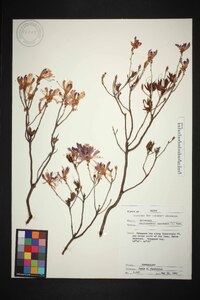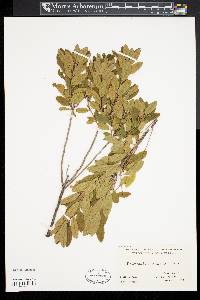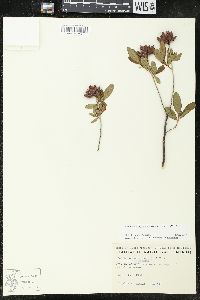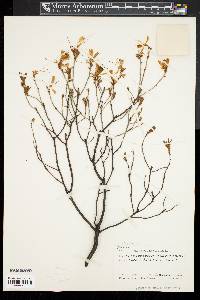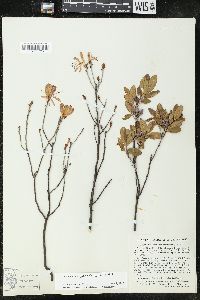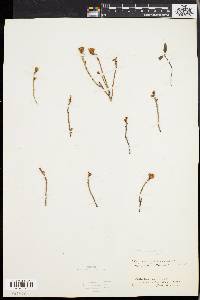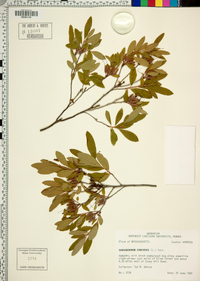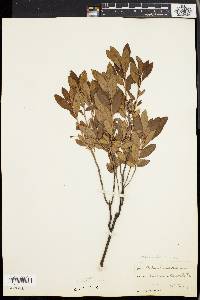Rhododendron canadense
|
|
|
|
Family: Ericaceae
Rhodora
|
Shrubs, to 1 m, rhizomatous. Stems: bark ± smooth to slightly shredding; twigs sparsely multicellular eglandular- and shorter stipitate-glandular-hairy (hairs unbranched), also unicellular-hairy. Leaves deciduous; petiole multicellular eglandular- and stipitate-glandular-hairy and unicellular-hairy; blade elliptic to oblong or obovate, 1-8.3 × 0.4-3 cm, thin, membranous to chartaceous, margins entire, usually ± revolute, sometimes plane, eglandular- and unicellular-hairy, apex acute to rounded, abaxial surface eglandular- and stipitate-glandular-hairy, also unicellular-hairy, (± glaucous), adaxial surface scattered eglandular- and stipitate-glandular-hairy, also unicellular-hairy. Floral bud scales unicellular-hairy abaxially, and often stipitate-glandular- and eglandular-hairy, margins unicellular-hairy. Inflorescences sometimes fasciculate, 3-9-flowered; bracts similar to bud scales. Pedicels 3-10 mm, (usually glaucous), usually sparsely stipitate-glandular-hairy, and sometimes also densely unicellular-hairy. Flowers appearing before or, sometimes, with leaves, erect to horizontal, fragrant; calyx lobes 0.4-1.5 mm, often scattered stipitate-glandular-hairy, sometimes also unicellular-hairy, margins glandular- and/or eglandular-ciliate; corolla rose-purple to pink, rarely white, unspotted or red-spotted on upper 3 lobes, irregularly shaped, clearly 2-lipped due to very extensive connation of 3 upper lobes contrasting with 2 elongate, widely divergent lower lobes, 12-22 mm, glabrous or, sometimes, sparsely stipitate-glandular-hairy on outer surface, petals connate, upper lobe 3-8 mm, lateral lobes 12-22 mm (closely connate with upper lobe), lower lobes 12-22 mm, tube absent due to deep division between 2 lower lobes and between lateral and lower lobes; stamens 10, exserted, ± unequal, 9-20 mm. Capsules borne on erect pedicels, 0.7-1.7 × 0.3-0.6 mm, multicellular stipitate-glandular- and eglandular-hairy and densely unicellular-hairy. Seeds with flattened tails; testa tightly appressed. 2n = 52. Flowering spring. Moist to dry, coniferous or mixed conifer-deciduous forests, thickets, open rocky areas, lake margins, bogs, swamps; 0-1900 m; N.B., Nfld. and Labr. (Nfld.), N.S., Ont., P.E.I., Que.; Conn., Maine, Mass., N.H., N.J., N.Y., Pa., R.I., Vt. Rhododendron canadense is distinctive and is most closely related to R. vaseyi; together they constitute sect. Rhodora (Linnaeus) G. Don (W. S. Judd and K. A. Kron 1995). Rhododendron canadense is sometimes cultivated for its showy flowers.
Branching shrub to 1 m; lvs deciduous, narrowly oblong to elliptic, 2-5 cm, ciliate, finely hairy, especially beneath; fls appearing with or before the lvs, few and subsessile in a terminal umbel-like cluster; cor rose-purple to white, 2 cm, divided almost to the base into 3 segments, the upper segment erect, shallowly 3-lobed, the 2 lower narrow, spreading; 2n=52. Bogs and wet woods; Nf. and Que. to Ont., s. to e. Pa. and n. N.J. (Rhodora c.) Gleason, Henry A. & Cronquist, Arthur J. 1991. Manual of vascular plants of northeastern United States and adjacent Canada. lxxv + 910 pp. ©The New York Botanical Garden. All rights reserved. Used by permission. |

